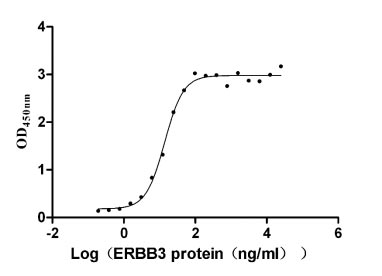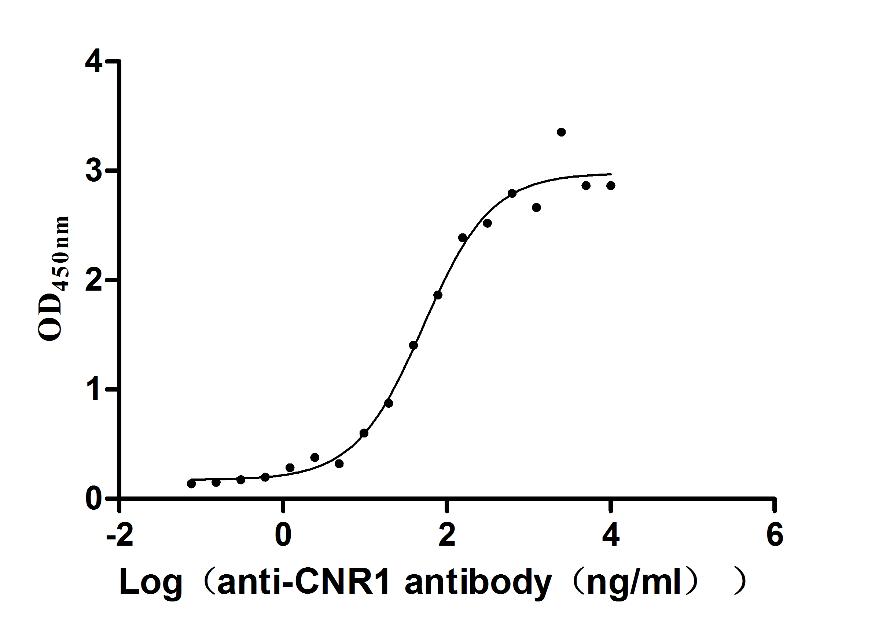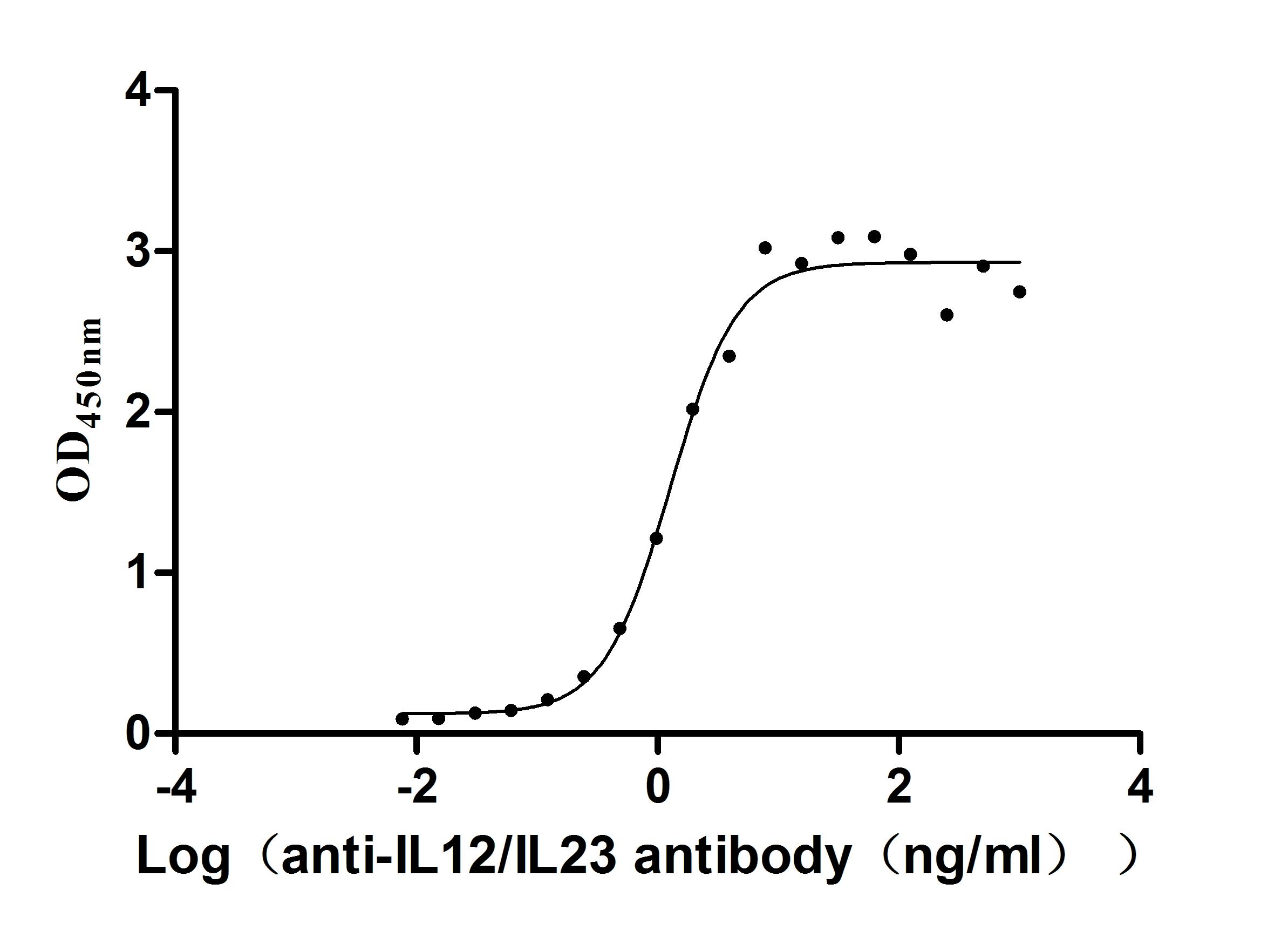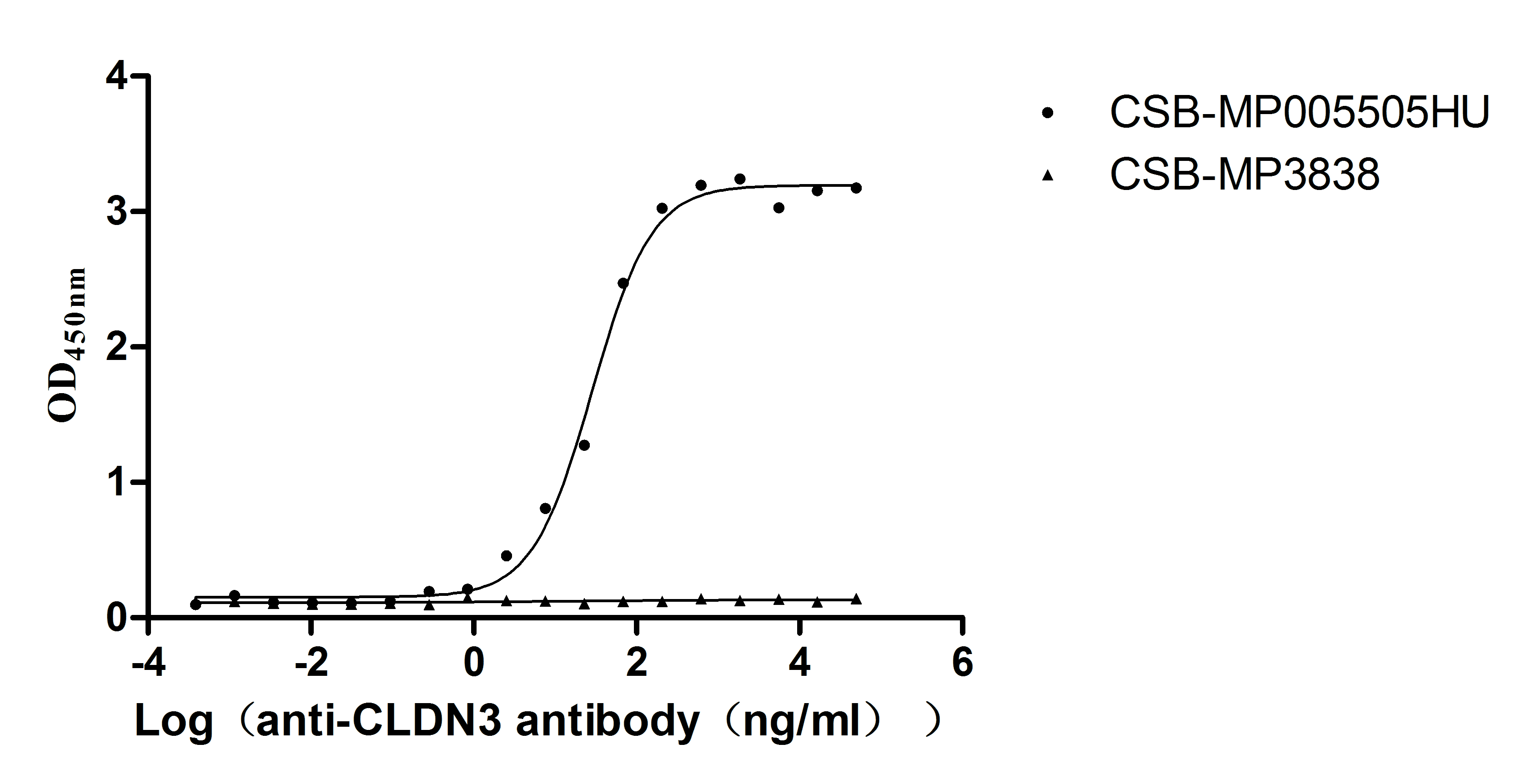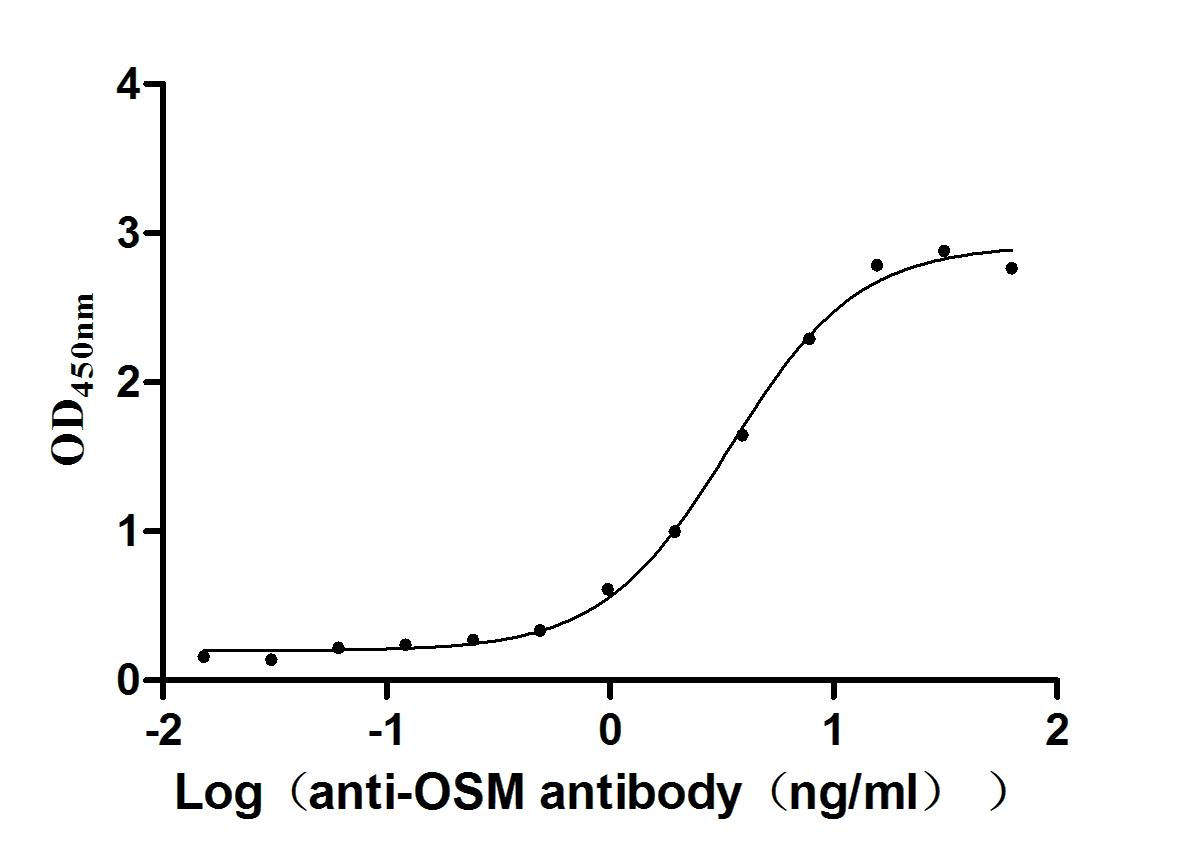Recombinant Human Non-lysosomal glucosylceramidase (GBA2), partial
-
中文名称:人GBA2重组蛋白
-
货号:CSB-YP881025HU
-
规格:
-
来源:Yeast
-
其他:
-
中文名称:人GBA2重组蛋白
-
货号:CSB-EP881025HU
-
规格:
-
来源:E.coli
-
其他:
-
中文名称:人GBA2重组蛋白
-
货号:CSB-EP881025HU-B
-
规格:
-
来源:E.coli
-
共轭:Avi-tag Biotinylated
E. coli biotin ligase (BirA) is highly specific in covalently attaching biotin to the 15 amino acid AviTag peptide. This recombinant protein was biotinylated in vivo by AviTag-BirA technology, which method is BriA catalyzes amide linkage between the biotin and the specific lysine of the AviTag.
-
其他:
-
中文名称:人GBA2重组蛋白
-
货号:CSB-BP881025HU
-
规格:
-
来源:Baculovirus
-
其他:
-
中文名称:人GBA2重组蛋白
-
货号:CSB-MP881025HU
-
规格:
-
来源:Mammalian cell
-
其他:
产品详情
-
纯度:>85% (SDS-PAGE)
-
基因名:GBA2
-
Uniprot No.:
-
别名:GBA2; KIAA1605; SPG46; AD035Non-lysosomal glucosylceramidase; NLGase; EC 3.2.1.45; Beta-glucocerebrosidase 2; Beta-glucosidase 2; Bile acid beta-glucosidase GBA2; Bile acid glucosyl transferase GBA2; Cholesterol glucosyltransferase GBA2; EC 2.4.1.-; Cholesteryl-beta-glucosidase GBA2; EC 3.2.1.104; Glucosylceramidase 2
-
种属:Homo sapiens (Human)
-
蛋白长度:Partial
-
蛋白标签:Tag type will be determined during the manufacturing process.
The tag type will be determined during production process. If you have specified tag type, please tell us and we will develop the specified tag preferentially. -
产品提供形式:Lyophilized powder
Note: We will preferentially ship the format that we have in stock, however, if you have any special requirement for the format, please remark your requirement when placing the order, we will prepare according to your demand. -
复溶:We recommend that this vial be briefly centrifuged prior to opening to bring the contents to the bottom. Please reconstitute protein in deionized sterile water to a concentration of 0.1-1.0 mg/mL.We recommend to add 5-50% of glycerol (final concentration) and aliquot for long-term storage at -20℃/-80℃. Our default final concentration of glycerol is 50%. Customers could use it as reference.
-
储存条件:Store at -20°C/-80°C upon receipt, aliquoting is necessary for mutiple use. Avoid repeated freeze-thaw cycles.
-
保质期:The shelf life is related to many factors, storage state, buffer ingredients, storage temperature and the stability of the protein itself.
Generally, the shelf life of liquid form is 6 months at -20°C/-80°C. The shelf life of lyophilized form is 12 months at -20°C/-80°C. -
货期:Delivery time may differ from different purchasing way or location, please kindly consult your local distributors for specific delivery time.Note: All of our proteins are default shipped with normal blue ice packs, if you request to ship with dry ice, please communicate with us in advance and extra fees will be charged.
-
注意事项:Repeated freezing and thawing is not recommended. Store working aliquots at 4°C for up to one week.
-
Datasheet :Please contact us to get it.
相关产品
靶点详情
-
功能:Non-lysosomal glucosylceramidase that catalyzes the hydrolysis of glucosylceramide (GlcCer) to free glucose and ceramide. Glucosylceramides are membrane glycosphingolipids that have a wide intracellular distribution. They are the main precursors of more complex glycosphingolipids that play a role in cellular growth, differentiation, adhesion, signaling, cytoskeletal dynamics and membrane properties. Also involved in the transglucosylation of cholesterol, transferring glucose from glucosylceramides, thereby modifying its water solubility and biological properties. Under specific conditions, may catalyze the reverse reaction, transferring glucose from cholesteryl-beta-D-glucoside to ceramide. Finally, may also play a role in the metabolism of bile acids. It is able to hydrolyze bile acid 3-O-glucosides but also to produce bile acid-glucose conjugates thanks to a bile acid glucosyl transferase activity. However, the relevance of both activities is unclear in vivo.
-
基因功能参考文献:
- Demonstrate that GBA2 plays a role in the proinflammatory state characterizing cystic fibrosis cells. Report for the first time that Pseudomonas aeruginosa infection causes a recruitment of plasma membrane-associated glycosphingolipid hydrolases into lipid rafts of CuFi-1-infected cells. PMID: 29333001
- Our protocol showed high specificity and sensitivity for homozygosity detection and facilitated the identification of novel mutations in GAN, GBA2, and ZFYVE26 in four families affected by hereditary spastic paraplegia or Charcot-Marie-Tooth disease PMID: 26492578
- GBA mutations as risk factors for PD and point to lysosomal dysfunction as a mechanism contributing to PD etiology. PMID: 27255555
- GBA2 mutations causing a Marinesco-Sjogren-like syndrome in two Norwegian families, are reported. PMID: 28052128
- Mutagenic analysis of TxGH116 and structural modeling of GBA2 provide a detailed structural and functional rationale for pathogenic missense mutations of GBA2 PMID: 27115290
- sphingosine, the cytotoxic metabolite accumulating in Gaucher cells through the action of GBA2, directly binds to GBA2 and inhibits its activity. PMID: 28258214
- The results suggested that SPG46 and SPG56 are rare causes of hereditary spastic paraplegia in China. PMID: 27553021
- Spastic paraplegia/cerebellar ataxia patients have a severe deficit in GBA2 activity, because the GBA2 mutants are intrinsically inactive and/or reduced in amount. PMID: 26220345
- SPG46 maps to 9p21.2-q21.12 in a Tunisian family with a complicated autosomal recessive hereditary spastic paraplegia with mental impairment and thin corpus callosum PMID: 20593214
- The GBA2 gene shows a low mutation frequency in a general population of complicated hereditary spastic paraparesis PMID: 24337409
- We hereby report a novel GBA2 mutation associated with spastic ataxia and suggest that GBA2 mutations may be a relatively frequent cause of autosomal recessive cerebellar ataxias. PMID: 24252062
- observations make GBA2 a likely candidate to be involved in Gaucher disease etiology. PMID: 24070122
- redefine GBA2 activity as the beta-glucosidase that is sensitive to inhibition by N-butyldeoxygalactonojirimycin. PMID: 23880767
- GBA2 loss of function led to abnormal motor behavior and axonal shortening/branching of motoneurons. PMID: 23332916
- This study suggests GBA2 mutations are a cause of recessive spastic ataxia and responsible for a form of glucosylceramide storage disease in humans. PMID: 23332917
- GBA2 is localized at the ER and Golgi, which puts GBA2 in a key position for a lysosome-independent route of glucosylceramide-dependent signaling. PMID: 23250757
- GBA2 is down-regulated in melanoma; inducible expression of GBA2 affects endogenous sphingolipid metabolism by promoting glucosylceramide degradation (decrease by 78%) and ceramide generation. PMID: 23073830
- GBA1 and GBA2 activities had characteristic differences between the studied fibroblast, liver and brain samples. PMID: 22659419
- Results describe the association between the MTX1 and beta-glucocerebrosidase genes and its possible effect on Parkinson disease. PMID: 21837367
- The structure of the N370S acid-beta-glucosidase mutant that causes Gaucher disease was studied. PMID: 21724649
- Beta-glycosidase from Sulfolobus solfataricus shows distant similarity to the non-lysosomal bile acid beta-glucosidase GBA2 in humans. PMID: 20427274
- Action Myoclonus-Renal Failure Syndrome-causing mutations within LIMP-2 affect the binding to beta-glucocerebrosidase. PMID: 19933215
- the non-lysosomal glucosylceramidase is identical to the earlier described bile acid beta-glucosidase, being beta-glucosidase 2 PMID: 17105727
- This study suggested that glucosidase-beta variants have a limited role in susceptibility to Lewy body disease in North America. PMID: 18829375
显示更多
收起更多
-
相关疾病:Spastic paraplegia 46, autosomal recessive (SPG46)
-
亚细胞定位:Endoplasmic reticulum membrane; Peripheral membrane protein; Cytoplasmic side. Golgi apparatus membrane; Peripheral membrane protein; Cytoplasmic side.
-
蛋白家族:Non-lysosomal glucosylceramidase family
-
组织特异性:Widely expressed. Mainly expressed in brain, heart, skeletal muscle, kidney and placenta and expressed at lower levels in liver, spleen, small intestine and lung. Detectable in colon, thymus and peripheral blood leukocytes.
-
数据库链接:
Most popular with customers
-
Recombinant Human Pro-neuregulin-1, membrane-bound isoform (NRG1), partial (Active)
Express system: Mammalian cell
Species: Homo sapiens (Human)
-
Recombinant Human Receptor tyrosine-protein kinase erbB-3 (ERBB3), partial (Active)
Express system: Mammalian cell
Species: Homo sapiens (Human)
-
Recombinant Human Semaphorin-4D (SEMA4D), partial (Active)
Express system: Mammalian cell
Species: Homo sapiens (Human)
-
Recombinant Mouse Prolactin receptor (Prlr), partial (Active)
Express system: Mammalian cell
Species: Mus musculus (Mouse)
-
Recombinant Human Cannabinoid receptor 1 (CNR1)-VLPs (Active)
Express system: Mammalian cell
Species: Homo sapiens (Human)
-
Recombinant Human IL12B&IL12A Heterodimer Protein (Active)
Express system: Mammalian cell
Species: Homo sapiens (Human)
-
Recombinant Human Claudin-3 (CLDN3)-VLPs (Active)
Express system: Mammalian cell
Species: Homo sapiens (Human)
-
Recombinant Human Oncostatin-M (OSM), partial (Active)
Express system: Mammalian cell
Species: Homo sapiens (Human)


-AC1.jpg)
